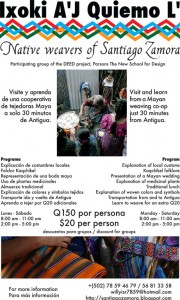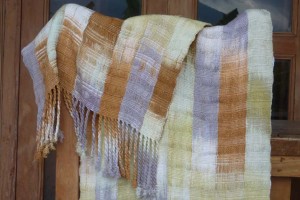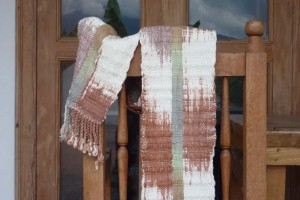Our last few days in Guatemala were so hectic we did not get around to blog and report back on all of the work we were able to accomplish. Now, with a bit of time, and back in NYC, I am happy to share this summary of our work (our team and most of the cooperative’s members are in the photograph below) in Santiago Zamora just a few weeks ago.

With only 9 full work days, this summer we decided to focus our time on supporting existing initiatives. Ixoki A’J Quiemo L’ already had a community tourism program, so we decided to focus on that initiative. We saw three areas for improvement:
- The program needed to be slightly tweaked, so we did what design school does best – we participated in a program (as tourists) and then critiqued the afternoon with the artisan women. They appreciated all of the feedback we shared since they really hadn’t had this kind of external input since they started these activities.
- Their branding materials needed a redesign. Not only did all of the content need to be bilingual, but our student team also mapped out a distribution strategy in Antigua – a map of the city with each location at which they can leave a flyer. Here are the before and after of the flyer they had and the one we redesigned. In the new one (on the right), we added a new logo for the cooperative as well as bilingual information about the program and its cost. Click on either to see larger versions of each. You will also notice they now have a website – a basic blog site which we designed for them (feel free to circulate it if you know of travelers going to Guatemala!)


- In advance of a summer 2011 trip during which we will want to focus on new product development, we conducted a design critique of the cooperative’s current artisan goods, and in particular focused on the fact that most of what they are making (beautiful but highly complex table runners) take too much time to make, cost too much, and are not products for which they can charge a fair price (because it would mean that they cost 10x what they can sell them for in the saturated market in Guatemala.)Â As homework, we asked Ixoki to think more about their new bracelet design so as to come up with a product that will take them just an afternoon to make (and not 300 hours for a table runner.)Â We also ran a workshop with the cooperative as a first step for them to start making their own designs to weave (as opposed to using existing design patterns which are sold all around Guatemala in local markets.)Â In the photograph below you see two of the women of Ixoki working on a new design on graph paper, and with crayons, during one of the student-led workshops.
On our last night in Antigua, some of the women from Ixoki visited us in Antigua to deliver samples of the bracelets they have started designing since our initial critique of their work. We are thrilled to see such motivation from this cooperative, as they are already exemplifying the leadership and initiative needed to run a successful business. We were also very happy to learn that after visiting us, their next stop was the copy shop, where they were going to make dozens of copies of the flyer we designed for them so as to distribute them around Antigua.
Finally, stay tuned to learn about our partnership with the Association of Guatemalan Designers. We had a fantastic meeting in Antigua during which we discussed how they can serve as on-the-ground contacts for our artisan collaborators throughout the year, and most importantly, how they can help our groups connect with a local craft/design market in Guatemala, therefore ensuring long-term sustainability for our projects. Stay tuned!
AJKEM’A LOY’A AND BARCO, SAN LUCAS TOLIMAN
I stayed in Antigua for 6 weeks, studying Spanish intensively. I wanted to be able to communicate better with the women we are working with. I joined the summer team of students visiting the women of Ixoki in Santiago Zamora and I visited the women of Ajkem’a Loy’a and Barco in San Lucas Toliman a few times.
I brought the finished tracksuit to the women of Ajkem’a Loy’a; I wanted them to see the final product. Together with students from the Fashion Area of Study in the Integrated Design program of Parsons, we had cut and hand sewn the beautiful pieces of fabric the women of Ajkem’a Loy’a had woven into a series of 8 track suits, 3 men’s and 5 women’s suits.

We embroidered all the names of the women and of the students who had worked on each suit in the back panels of the top. The women were excited to see the suits. We drank coca-cola and ate Telma’s cookies as we had done each afternoon in January 2009 when we developed the weaving and the patterns for the initial prototype tracksuit together.




I also visited the women of Barco and was met by a very pleasant and unexpected surprise. Since we (DEED) didn’t have funding this year to continue our work with the women in San Lucas Toliman, it was a great surprise to see the whole new line of products Barco had developed. Eufemia had them stored in a garbage bag in a corner of her apartment. She pulled them out one by one to show me, and I was amazed. The scarves looked so contemporary and unique, they had developed a new way of weaving that was much more loose and combined many more threads in both the warp and the weft. It made the scarves very soft, supple and lush, and extrmely comfortable to wear. I got very excited. I thought it would be amazing if the women of Barco would visit me in Antigua for a weekend, so we could show their products to different shops in Antigua.
Antigua is the tourist capital of Guatemala and it has many high-end textile stores that cater to western visitors. For the women this was a challenge, none of them had ever really stayed outside their village. They had some fear around traveling to Antigua and spending the weekend. I imagined it would be a good step and since I would accompany them and fund their trip, it might make their decision to come easier. In the weekend of July, Eufemia traveled to Antigua with the new product line of Barco. I met her at the bus station and that weekend, we visited all the high-end shops in Antigua. Many shops were interested and one placed an order with the women.
At the end of the day on Saturday, we walked into the shop Colibri and showed the sales women the scarves of Barco. The women were so enthusiastic that they called Vey, the owner of the shop. She asked to speak to me and I spoke with her briefly. Though she was busy, I was able to convince her to receive us at her home nearby the shop. Vey was great! She looked at all the products and talked with Eufemia about the weaving.

She asked Eufemia if she could come back to Antigua on Wednesday; she was hosting a buyer from the US and thought he would be interested in their product. She encouraged Eufemia to bring as many products as she could. Vey loves San Lucas Toliman, she has a house there and is exited to work with a women’s artisan collective from there. Colibri is one of the main high-end shops in Antigua and over the course of 20 years Vey has worked with approximately 500 artisan groups from all over Guatemala. Eufemia was delighted, and told me that now that she had been to Antigua once, she had no fear of traveling there again. She would return on Wednesday with as many products as she could carry.
The rest of the weekend we photographed the products together and sent them to some of the other shops that had requested to receive images. We created a first blog and an email address for Barco.

see Barco’s full collection here: http://www.barcotextiles.blogspot.com/
On Wednesday Eufemia returned to Antigua. Vey placed a substantial order with Barco.





Vey paid Eufemia half of the money in advance so they could buy the yarns and make the products. The buyer from the US was extremely enthusiastic about the products and said they could easily be sold at Barney’s, New York. But since DEED doesn’t have a legal structure yet for the import of the products and the handling of money transactions this will have to wait. I am extremely grateful that Vey of Colibri invested in the women for now, and that the women made new steps in their process of growing a sustainable business.
Pascale



